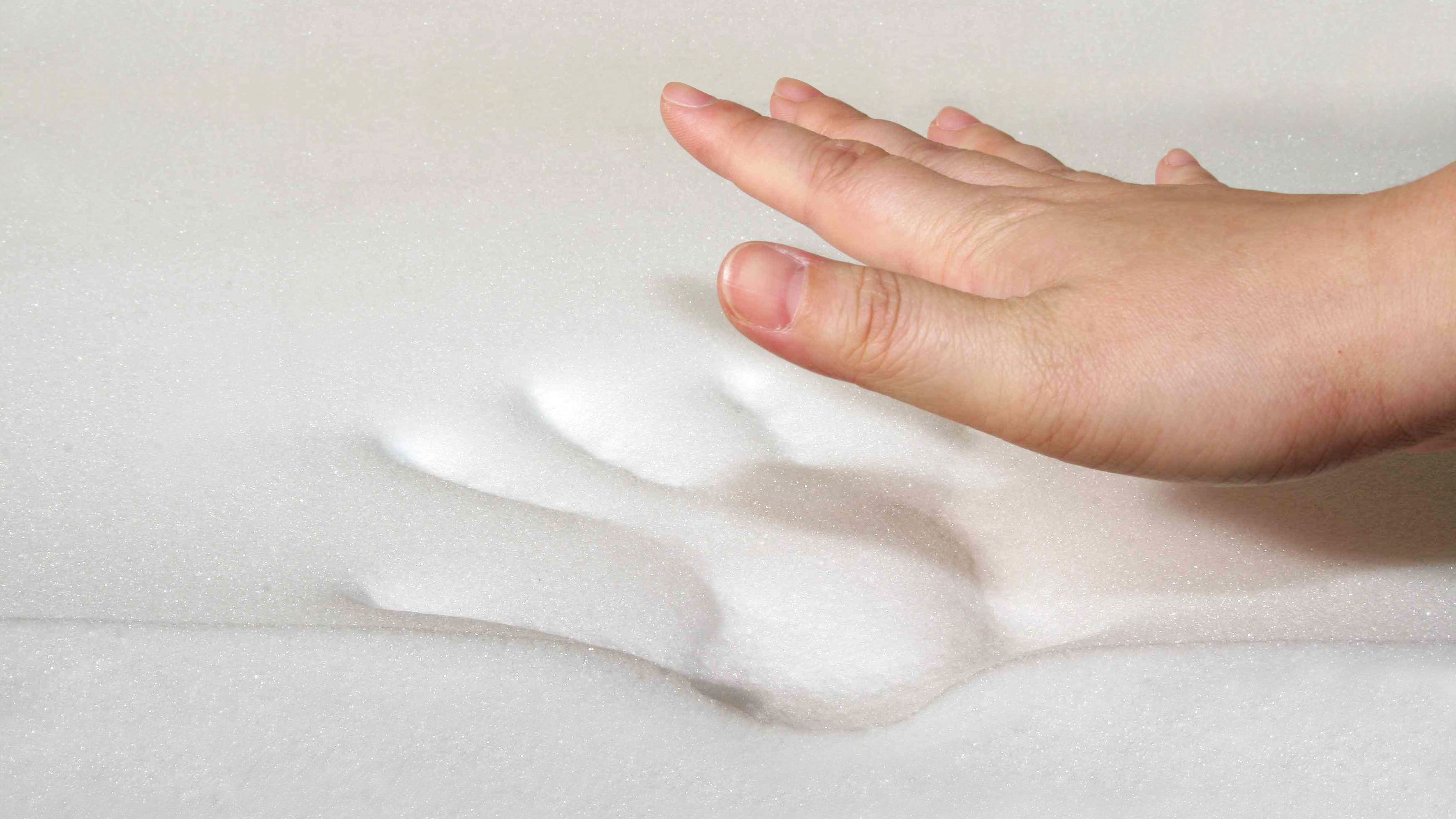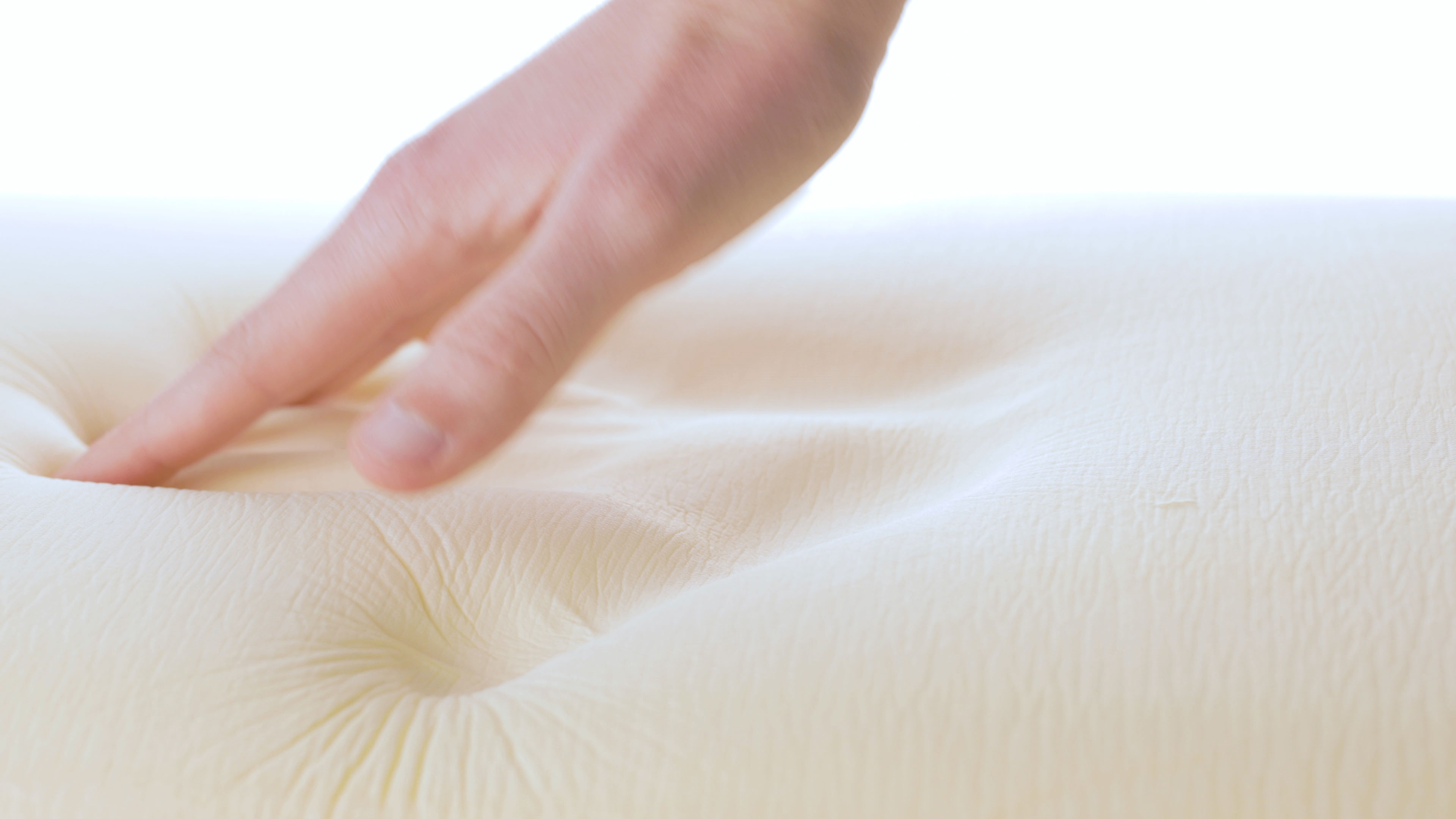
Memory foam is a hugely popular mattress material, offering up contouring comfort and a distinctive sink-in feel, but is memory foam toxic or healthy to sleep on? As many eco sleep brands extoll the virtues of fully organic beds free of memory foam, it's normal to start questioning whether this popular synthetic material really is safe.
After all, a large majority of 2024's best mattresses for pressure relief contain memory foam due to its body-hugging properties and ability to vastly reduce pressure points. It's also found in a range of sleep accessories including pillows and toppers. However, are the chemicals used to create memory foam's trademark softness actually toxic and should we really be sleeping on it?
Here we explain what is memory foam and how it's made, plus the benefits and drawbacks of memory foam and whether it's toxic or not. We'll also show you which mattress safety certifications to look for when shopping for a new bed in the Presidents' Day mattress sales.
What is memory foam?
Memory foam is a soft, comfortable material used in multiple products, from shoes to helmets. Since the 1990s, memory foam has become a staple in the mattress and bedding industry, with the memory foam beds being renowned for their cushioning support and the soothing relief they provide to sleepers with joint pain.
The material is a type of polyurethane foam mixed with additives to give it the ability to contour to or 'hug' your body. This means your shape will be indented into the foam when you get up. Memory foam is created by combining polyols (an organic compound) with diisocyanates (another organic compound). Once the mixture forms a chemical reaction, a blowing agent is added to make it expand into foam.

Are memory foam mattresses good?
The best memory foam mattresses have a lot of benefits, particularly for sleepers experiencing back and joint pain. The foam moulds around your shape to cushion and sooth joints, alleviate pressure and tension in the lower back, and evenly distribute your weight for a more comfortable sleep experience.
It's hardly surprising then to find memory foam in the best mattresses for side sleepers, as memory foam beautifully cushions the hips, knees and shoulders (areas which experience the most impact when lying on your side).
Is memory foam toxic?
While the two types of organic compound (polyols and diisocyanates) are considered safe, the chemical reactants that make the polyurethane foam can cause health problems. Some of these chemicals include toluene, which can cause breathing problems and skin irritation, and formaldehyde, which can have adverse health affects.
These chemicals can release volatile organic compounds (VOCs) groups of chemicals that can vaporize into air. According to the United States Environmental Protection Agency, these VOCs can cause eye, nose and throat irritation; headaches and loss of coordination; nausea; and damage to the liver, kidneys or central nervous system.
Crucially, most of these harmful chemicals are only present during the manufacturing process and are mostly released by the time they're delivered to you. VOCs may cause some mattress off-gassing (a strong chemical smell) when you unbox a new mattress, but this is generally harmless and usually goes away quickly when the bed is opened in a well-ventilated room.
Some mattress brands, such as Amerisleep and Serta, have also turned to non-toxic, plant-based memory foams. Plant-based memory foams still contain polyurethene, but a percentage of that chemical is replaced with natural elements such as plant-based oils.

What is a CertiPUR-US® certification?
Memory foam beds have come a long way since the 1990s and their production is now more regulated to ensure safer, eco-friendlier foam. For example, the majority of memory foam mattresses are now made without formaldehyde.
When buying a new mattress, there are a number of certifications to look out for that ensure the manufacturer is making mattresses with safe, high-quality foam. One such certification to look out for is the CertiPUR-US certification, which confirms that the foam used in a mattress meets safety and environmental standards by containing no formaldehyde, mercury, lead or other heavy metals.
It also must have low VOC emissions to gain this certification. Thankfully, most of the best mattresses in a box brands are CertiPUR-US-certified, and a full list of CertiPUR-US-certified mattress brands is available online. Other certifications, such as GreenGuard, GOTS, GOLS, and OEKO-TEX Standard 100 also identify non-toxic mattresses.
Are memory foam mattresses toxic?
Generally, memory foam mattresses are safe to sleep on. Most memory foam mattresses today comply with safety and environmental standards, with mattress safety certifications such as CertiPUR-US-certifications and GOTS signalling when a mattress's foam meets certain criteria and is safe for human use.
If you'd rather look for a mattress without memory foam, you can try an innerspring bed or one of best organic mattresses for a completely non-toxic sleep. Many natural mattresses use latex foam, which is hypoallergenic, durable and naturally breathable, but expensive.
Memory foam is also used to make pillows and mattress toppers, and these are safe to sleep on too.
What are the best non-toxic mattresses?
Many non-toxic mattresses are available online, with eco luxury brands such as Avocado and Awara priding themselves on manufacturing beds made from clean, natural materials. Here are our top three picks for the best non-toxic mattresses, all as tried and tested by our panel of sleep experts:







